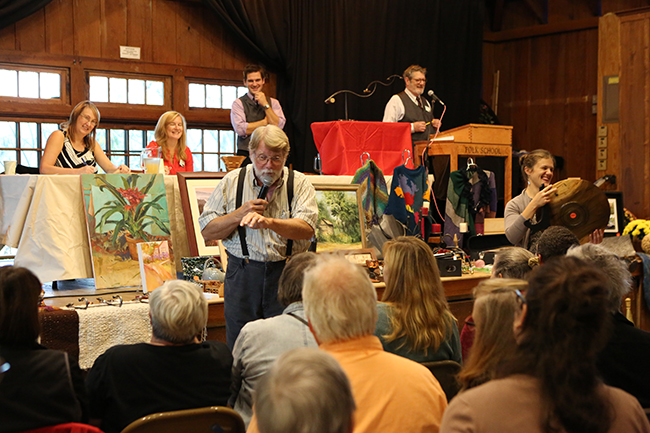
31 May My Fascinating Lunch with Tim Ryan: Auctions, Dibbles, Zen, Gardens & More
 I first met Tim Ryan on a misty morning in the Folk School Garden when I was a Work/Study in 2011. My immediate impression of him was that he was a very witty & interesting character with lots of fantastic stories. Tim is involved in the Folk School in so many different ways. I thought this would be a good moment to sit down and learn a little bit about Tim the gardener, auctioneer, medicine showman, raconteur, kettle cooker, blacksmith, instructor, former Folk School Board member, bibliophile, and storyteller, that is Tim Ryan. We recently sat down over lunch to talk about many things. Enjoy our interview!
I first met Tim Ryan on a misty morning in the Folk School Garden when I was a Work/Study in 2011. My immediate impression of him was that he was a very witty & interesting character with lots of fantastic stories. Tim is involved in the Folk School in so many different ways. I thought this would be a good moment to sit down and learn a little bit about Tim the gardener, auctioneer, medicine showman, raconteur, kettle cooker, blacksmith, instructor, former Folk School Board member, bibliophile, and storyteller, that is Tim Ryan. We recently sat down over lunch to talk about many things. Enjoy our interview!
CP: When did you first come to the Folk School?
TR: I had gotten divorced and it killed me. This was 26 years ago. I was depressed and blue and three things saved me: my Blacksmithing buddies, Al-Anon, and having a daughter.
At one of the Appalachian Area Chapter Blacksmith Meetings in Mt. Juliet TN, they were having a raffle and the winner would get a free class at the Folk School. Well I don’t usually enter raffles, but my Blacksmithing buddies convinced me to enter and I won. I think they set it up because I was depressed and they knew I needed something else to focus on. It worked because I won the raffle in March or April and the class wasn’t until October, so all summer long I worked hard to become a better blacksmith, worthy of the class at the Folk School.
In the fall of 1990, I used my scholarship to take a 2-week Blacksmithing class at the Folk School with Francis Whitaker, which I was by no means near prepared for, naturally.
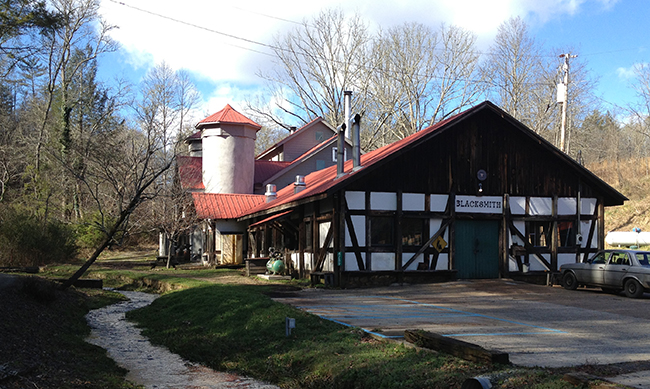
The Folk School Blacksmith Shop (Original Francis Whitaker Shop in the foreground, the new Clay Spencer Shop in the background)
CP: How was the class?
TR: The original Blacksmith Shop is named after Frances Whitaker, who was the class instructor. The new Blacksmith Shop is named after Clay Spencer, who assisted the class. Clay and I started blacksmithing about the same time. I met him in Murfreesboro, TN. Clay had been studying intensely at the Folk School and by the time I came and took the class, Clay was already Francis’s assistant.
Francis walked around the shop every few hours seeing what everyone was doing, and whenever he got up to do that, Clay would always run over to my station and say, “What are you doing? Put that under there… don’t let him see that. Here, hit on this for a little while.” He’d run interference for me. With him helping me, I had a great two weeks!
CP: When did you start teaching at the Folk School?
TR: When I came to take my first class, I approached Ruth Truett (the Program Director at the time) about teaching. I said, “Ruth, I want to teach Blacksmithing here.” And she said, “Well, you have picked a difficult subject. There’s 30 world famous blacksmiths on the list already who want to teach Blacksmithing here. One of them will have to die, or you’ll have to be really great.”
I had been teaching blacksmithing for 6 years at Middle Tennessee State University in the old farrier shop there, so I really thought I could do it. That was before I really knew how good the level of instruction was in the Folk School Blacksmithing program.
I said “What else can I teach?” And Ruth replied with a smile, “Well how would I know that?”
So I went home and I wrote up class descriptions for six gardening classes which was my main profession.
CP: That so inspiring! Were the classes well received?
TR: In 1992, all my six of my Gardening classes appeared in the catalog and all of them made, except one, and that was Orchard Management class. Even though that class did not make, we planted an orchard at Orchard House in preparation for the possibility of the class.
I don’t know if there had ever been one there or not, but there wasn’t one at the time. They let me pick out the trees to plant, so we would have an orchard ready for the class. I don’t think we ever had an orchard management class, but from time to time there have been people (including me) pruning out there.
CP: One of my first memories of you is when I was a Work/Study, we pruned the orchard with you. I never knew the history behind it. That’s neat. I love looking at the tree that I pruned and watching how it grows.
TR: I’ve noticed that that one has especially thrived!
CP: Yeah? (laughs)
TR: Trees know when you care about them.
CP: When did you become Resident Artist of Gardening and Homesteading?
TR: Pretty quickly after I moved here. I had already been on the JCCFS Board for ten years (1994-2004). It makes sense for the Folk School to have a Gardening Program, but to my knowledge, they had not had one since the 1970s (until I started teaching again in 1993).
There was a vacuum there, so somewhere around the year 2000 we first started the Vegetable Garden. I think I became Resident Artist around then, it has been about 15 years.
CP: Karen Hurtubise is your successor. Can you talk about that?
TR: The whole time I was Resident Artist, Karen always had great ideas and always threw suggestions at me. Being a Resident Artist takes a firecracker personality and gardening is an area where she is a good spokesperson and promoter. (Read Karen’s story: Meet Karen Hurtubise, New Resident Artist)
CP: You often teach at art of bonsai. What do you like about bonsai?
TR: In general, I like the Japanese approach to gardening. It was a Japanese gardener who wrote The One-Straw Revolution, which to my mind is the modern beginning of the permaculture movement. In food and ornamental gardening, the Japanese have been role models for us for a long time and the most concise form of Japanese gardening is bonsai.
The Japanese learned it from the Chinese, where it is called penjing. It’s the idea of a plant in a pot (bon is plant, and sai is pot). It’s a composition and the pot is more important than a frame on the picture, it is part of the composition.
It’s wonderful, you can take 3rd graders and do bonsai, and then, when you have gardened for 50 years and you are looking for a challenge, bonsai is the perfect thing there also.
The man who taught me landscape design, also taught me bonsai, so I’ve been doing this since high school. I am intrigued with it. In much of life we are battling illusion, illusion in our own minds about who we are and who the people around us are. In bonsai, illusion works to your advantage. What you are trying to do is create the illusion that a plant that is maybe 3 years old, is 20 years old. I really enjoy that.
CP: What’s the main difference between Eastern and Western gardening philosophies?
TR: Well, this relates to Zen Buddhism. The three words that come to mind are impermanence, imperfection, and frailty. I think that’s Zen in a concise nutshell.
I also think these words describe the Folk School. The few times I have done Morningsong, I have done it on the theme as the Folk School as a Zen environment and the Zen concept of “beginner’s mind,“ which refers to having an attitude of openness, eagerness, and lack of preconceptions when studying a subject.
Whenever you create a garden, you are really just giving things a nudge. You put together plants, water, rocks, and all you have done is the start of something. Every garden, no matter how elaborate starts with just one seed planted. Who knows how that’s going to grow through the decades? We can’t predict what impact it will have on people’s lives and what impact people’s lives will have on the garden. To me, these ideas are all very Japanese.
The European (French & Italian) gardens at the time of the American Revolution were the standard of fine gardening. This style is static. They would make a garden and prune it and care for it, to keep it exactly how it is. The Japanese plant a garden and stand back and let God and nature take it from there (with a gardener’s intense scrutiny as the seasons progress).
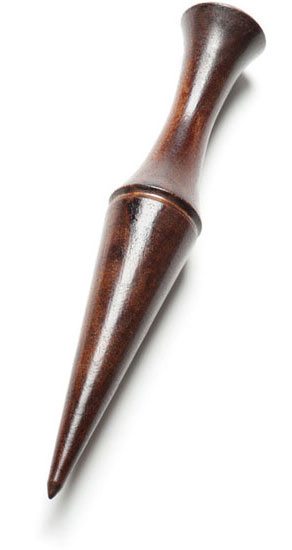 CP: What’s your favorite garden tool?
CP: What’s your favorite garden tool?
TR: It’s not one I use very often, but it is my favorite: the dibble. I have my father’s dibble, my grand father’s dibble and my Uncle Felts’ dibble. You might even say I dabble in dibbles. In recent years, I’ve doubled my dibbles. I just collect dibbles.
A dibble is basically a stick with a point on the end that you make a hole in the ground to put a seed or small plant in. It just is the most wonderful tool and it is the original most basic gardening tool.
CP: Recently the word “Homesteading” was added to the Gardening Program title. It is now the Gardening & Homesteading Program. Why did that change?
TR: In the 70s & early 80s, there was a Homesteading Program at the Folk School in which many of our current leadership adults participated. Even though that pre-dates my time in Brasstown, the Folk School does have a history with Homesteading.
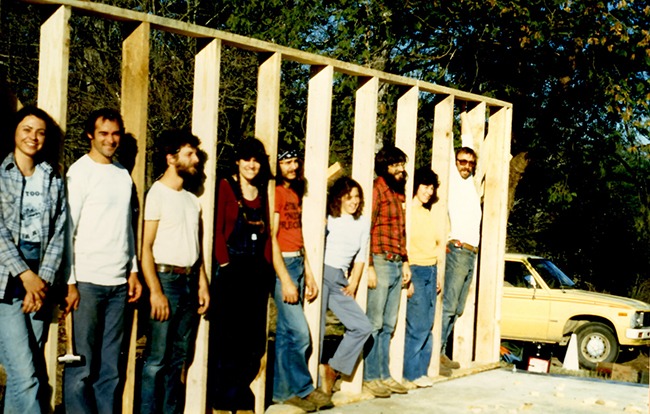
Participants in the Homesteading Program stand in the wall of Little House, which they built in 1981. (L-R: Toni Meador, “Jim” Andy Ward, Nanette Buchen, Michael Thornton, Kim Box, Mike Oliphant, “Anita,” Gerard Archibald.
I was trying to encourage building in the Gardening Program (like building raised beds, build stone structures, build a shed, etc). Homesteading stretches the definition of what gardening is, so it includes more than just putting a hole in the ground.
CP: Besides the Vegetable Garden, what other garden projects have you been involved in on the Folk School campus?
TR: I designed the general layout of the Vegetable Garden and the structure there. I designed the general layout of the Herb Garden and the structure there. I created the little circular garden in front of the Painting Studio. Thought the years, I’ve done a lot of projects at the Folk School, but the one I’m proudest of is the Medicine Wheel by the Rivercane Walk and the creek, where the Selu corn goddess statue is. I didn’t have boulders as big as I wanted, but we made do with what we had. The design was inspired by Sun Bear who wrote a book on the native American Medicine Wheel.
CP: Let’s talk about auctions since the June Gala & Benefit Auction is just around the corner. How did you get into auctioning?
TR: Benefit auctioning is a niche. I got into it because of Jim Batson, who teaches knife making here at the Folk School. Years ago, at the 2nd Alabama Blacksmith reunion, I took a green coal class and made a great poker with a wizard head on the end. I was finishing the project up and was so proud of it. My instructor came over and picked it up and said, “This is going to sell so good at the auction tonight.” I said, “WHAT?!?” He said, “Oh, you didn’t know? Everything we make in green coal we donate to the auctions to fray the cost of the conference.” I really could have cried.
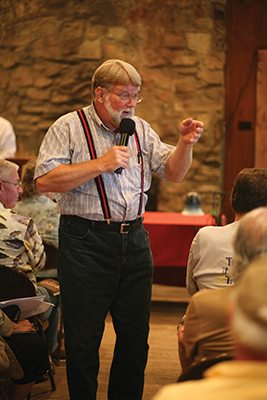 CP: Couldn’t you have bought it?
CP: Couldn’t you have bought it?
TR: That’s exactly what I decided to do! I was going to buy my poker back, I didn’t care what it cost. I went to auction in the little old school house at Tannehill. It was packed. Jim was giving the welcoming address, but after a while it became apparent that he was stalling and waiting for the auctioneer, who had not yet arrived.
Jim and I had a 5 minute conversation and that was the extent of our entire wordly interaction. Jim had stalled for 20 minutes and when he saw me, he decided on a new plan. He walked over, grabbed me, and said to everyone, “This is Tim Ryan, our auctioneer!” with no prior discussion! I have no clue what made him think I could do it.
Talk about the adrenaline kicking in! I jumped in and did it. I’d been to a lot of auctions, but I never had done that before. We raised $1200 that year. The year before that they only raised $400, so they asked me to come back and do it again next year. I got a reputation as an auctioneer and started getting invited to other events. I enjoyed it so much that I paid to put myself through auctioneer school, so I could do it with more knowledge and skill.
CP: What makes someone a good auctioneer?
TR: The same thing that makes someone charming is the same thing that makes someone a good auctioneer. To be charming, you have to believe that you are a worthy, interesting person, that anyone would benefit from knowing. For example, you have to believe it enough to be able to walk up to six people over there in the corner talking, you don’t know any of them, but you can walk right up and join their conversation because you have that honest belief that you are the person that those 6 people would have missed out on by not meeting you tonight. You have to really believe it.
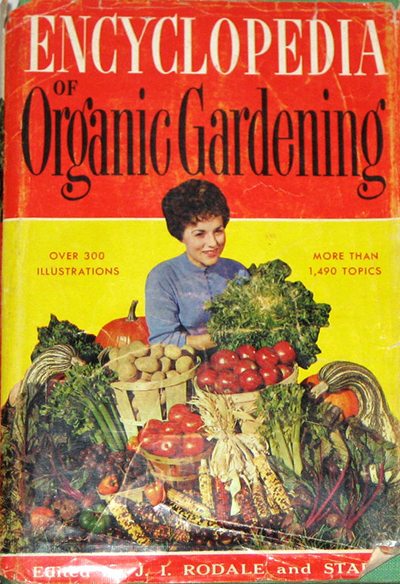 CP: Anyone who has seen your library knows you are an avid reader and book lover. So, to conclude, I have book question: The Time Machine by H. G. Wells ends with George Wells taking 3 books with him upon which to rebuild humanity which has forgotten its past. What 3 tomes would you take?
CP: Anyone who has seen your library knows you are an avid reader and book lover. So, to conclude, I have book question: The Time Machine by H. G. Wells ends with George Wells taking 3 books with him upon which to rebuild humanity which has forgotten its past. What 3 tomes would you take?
TR: That’s easy for me. I’d take:
Walden by Henry David Thoreau
Seventeen Problems of Man and Society by Ralph Borsodi
1st Encyclopedia of Organic Gardening
Those would provide instant information and inspiration, especially for rebuilding a new society!



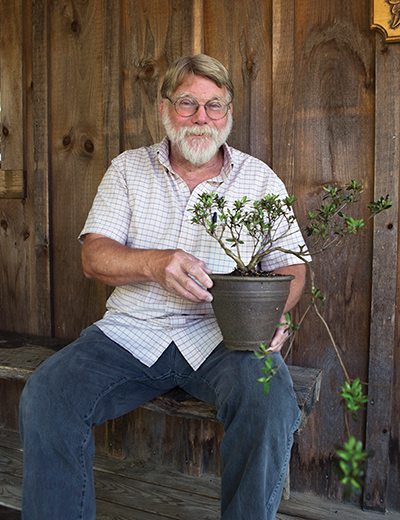

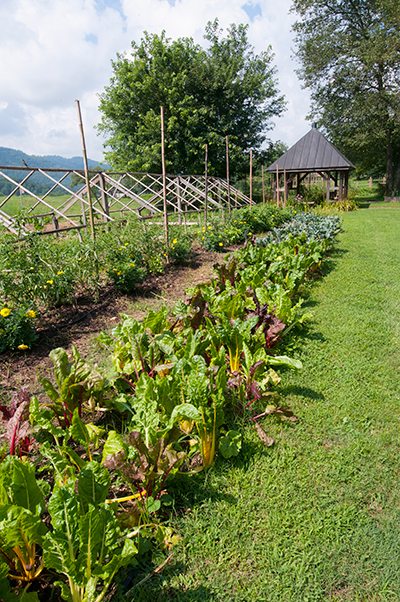
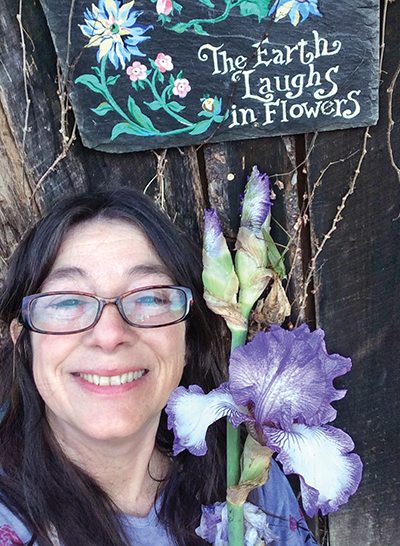
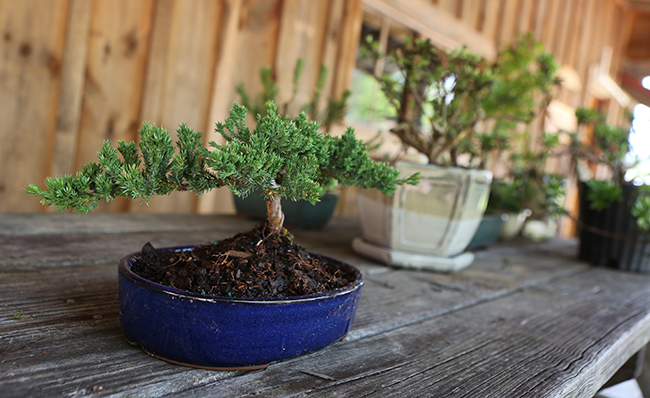
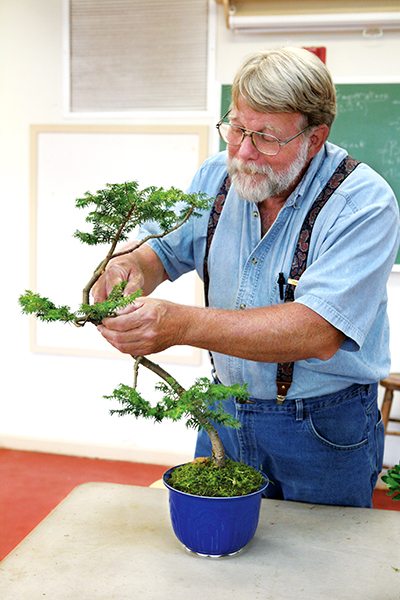
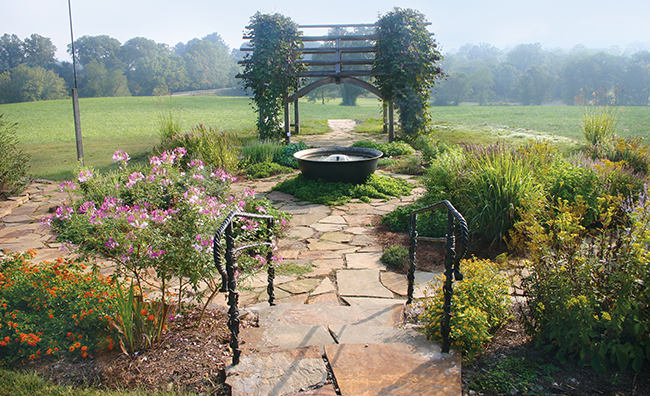
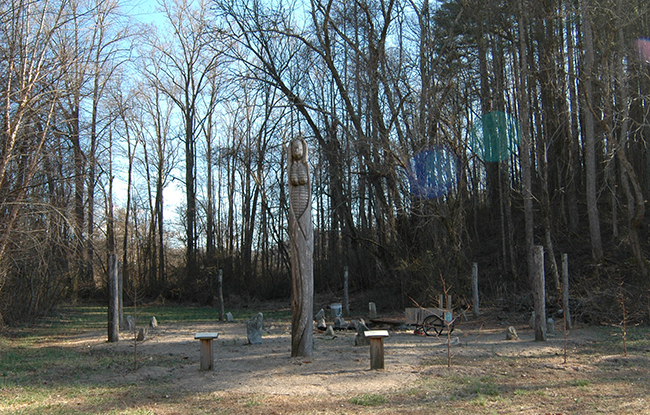
Rooney Floyd
Posted at 15:49h, 31 MayCory Marie: Great interview! I have known Tim a long time. He is a wonderfully interesting, well informed, unique, and…complex… individual; one I would find difficult to describe. You framed him as well as could be expected.
Tim: My friend, I see we have an additional connection. I fully enjoy Thoreau as well.
Cory Marie Podielski
Posted at 20:25h, 31 MayThanks Rooney! I’m glad you enjoyed it. Tim was so easy to interview because he is such a storyteller and does so many different things! The editing was the tough part. I may need to do a “Part 2.”
Terry Hale
Posted at 15:29h, 01 JuneGreat interview! Great subject!
Cory Marie Podielski
Posted at 17:22h, 01 JuneThanks Terry! I appreciate your comment 😉
Wanda Gobbell
Posted at 17:32h, 03 JuneBecause of Tim Ryan I became a landscape designer and it was a great career for me. After retiring and having been a part of our local arts center I’m now Historian of the Tullahoma Fine Arts Center and well remember my classes with Tim. Who can forget him!!
Cory Marie Podielski
Posted at 07:27h, 08 JuneWhat a sweet story! Thanks for sharing Wanda.